Identifying Lawn Diseases: A Guide With Pictures
Keeping your lawn healthy involves more than just watering and cutting it. Grass, like other plants, can catch diseases that tarnish its vibrant green look.
Spotting issues early—like discolored patches, thinning grass, or signs of mold—is critical to keeping your yard looking fantastic.
Learning what each symptom means helps you act fast to stop the damage. Stay tuned to learn how to keep your lawn resilient and lush, all year round!
Key Takeaways
- Brown patches, red threads, and dollar spots are common fungal diseases in lawns, which can be identified by specific symptoms like discolored patches and lesions on grass blades.
- Fairy rings and rust are notable for their distinct visual symptoms, such as rings of dark green grass or reddish-brown discoloration and spores on the grass blades.
- Moisture plays a significant role in developing many lawn diseases, with conditions like snow mold and pythium blight thriving under wet and humid conditions.
- Proper identification and timely management of symptoms are crucial in preventing the spread of lawn diseases and maintaining healthy turf.
- When lawn disease symptoms persist, or lawn care becomes too burdensome, consulting lawn care experts can provide professional solutions and relief.
Brown Patch
Brown patch is a common lawn disease, particularly in warm, humid weather. Excessive nitrogen fertilizer exacerbates it, and characteristic patches of discolored grass identify it.
Identifying Brown Patch
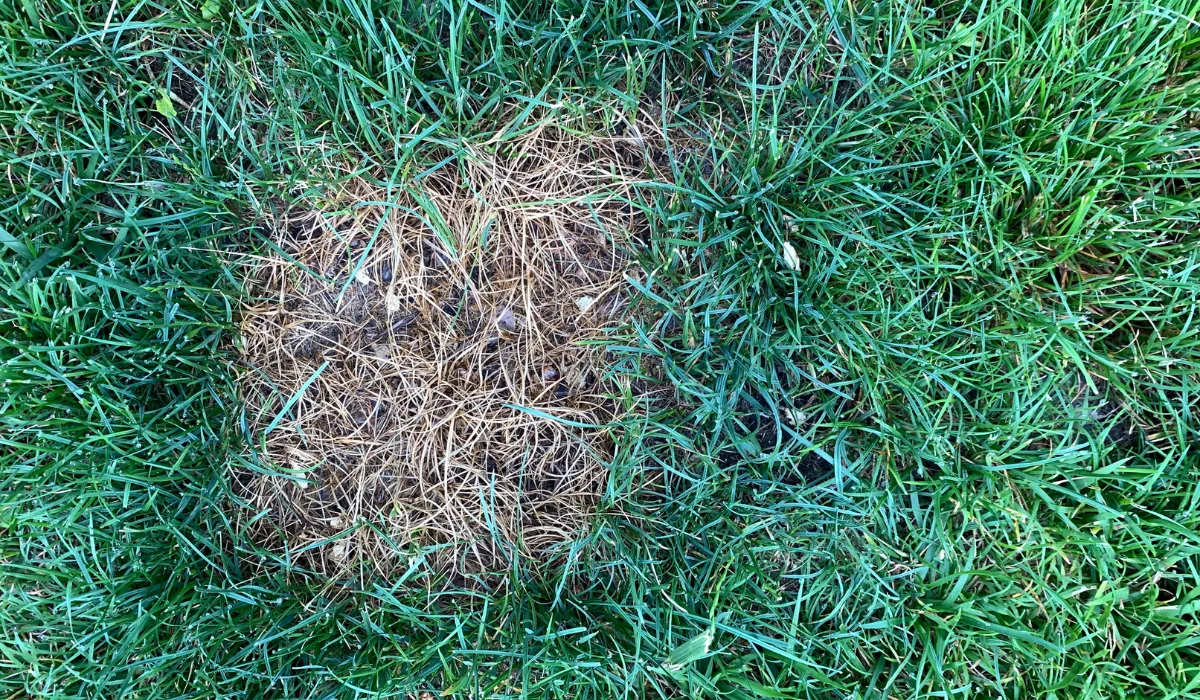
As a fungal disease, brown patch is caused by the pathogen Rhizoctonia solani. To confirm that you're dealing with a brown patch, observe the following distinctive features:
- Circular patches of brown, dead grass surrounded by a narrow, dark ring.
- Grass blades within the patch may have irregular, tan lesions with a dark brown border.
- Patches that are active in their growth may exhibit a smoke ring, which is a grayish-purple border that appears during morning hours when dew is present.
- The disease favors high temperatures, especially during night-time, typically between 70-90 degrees Fahrenheit.
- Lawns with excessive nitrogen levels appear to be more susceptible to brown patches.
Red Thread
Red Thread is a common fungal disease caused by the fungus Laetisaria fuciformis, which lives in lawns' lush leaf blades. It affects cool-season turfgrasses in poor drainage and wet weather conditions.
Symptoms of Red Thread
This lawn disease manifests visually with telltale signs, such as:
Symptoms | Description |
Pink or Red Threads | Fine, thread-like strands of the fungus extending from leaf tips |
Patches | Areas of grass turning tan or faded, ranging in size |
Grass Binding | Blades stuck together by the fungal mycelium, forming a dense mat |
Leaf Damage | Blade tips appearing ragged with signs of fungal growth |
Weather Conditions | Most commonly seen during cool, moist conditions with poor drainage |
Dollar Spot
Dollar spot is one of the most common and damaging turfgrass diseases. As lawn care enthusiasts, you should know its early signs and conducive conditions to ensure timely management.
Recognizing Dollar Spot
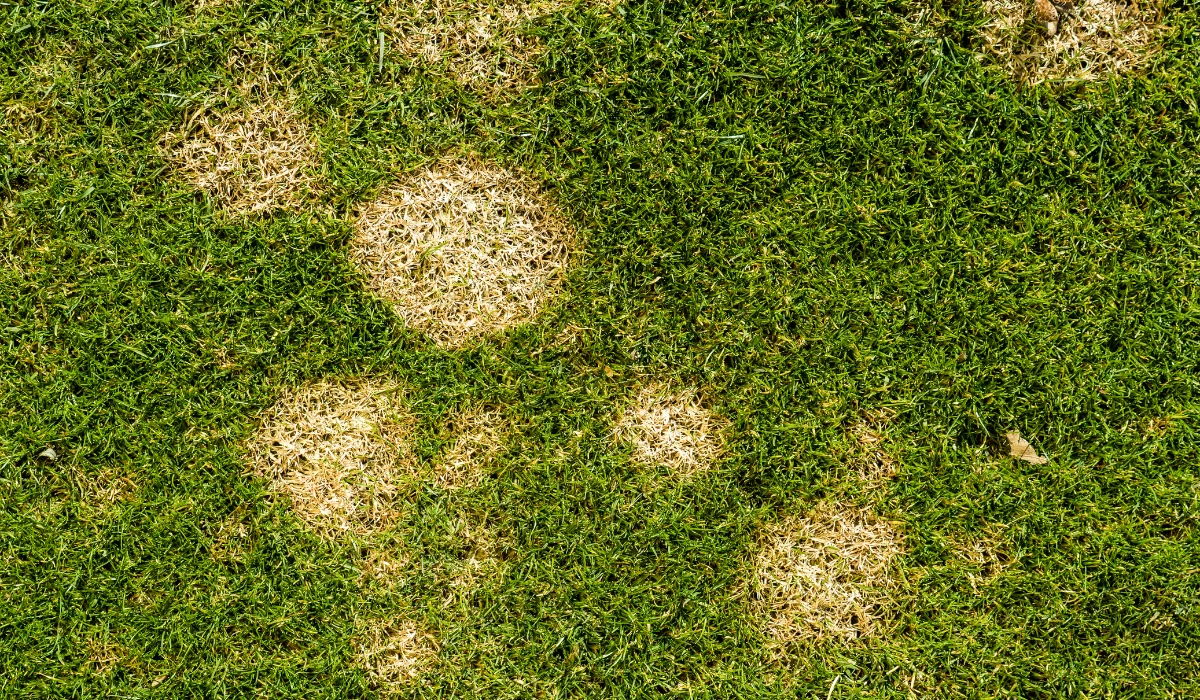
Identifying the dollar spot early on can be pivotal in preventing its spread. Here’s a closer look at essential indicators to look out for in turf like bentgrass:
- Patch Size: Circular spots about the size of a dollar coin
- Grass Blades: Lesions with tan centers and reddish-brown borders
- Moisture: Presence of water-soaked areas, especially with early morning dew
- Thatch: Thick thatch layer that retains moisture and promotes fungal growth
Fairy Ring
Fairy Rings are a notable phenomenon, identifiable by their distinct rings and impact on grass health.
What is a Fairy Ring?
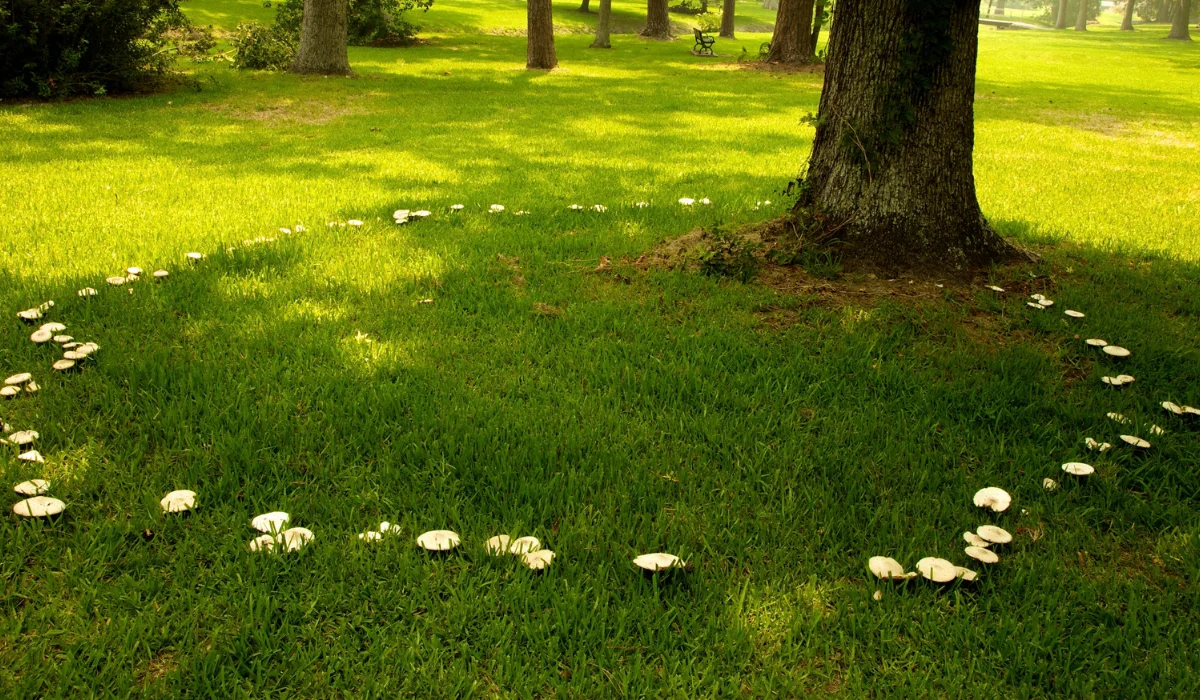
Fairy Ring is a type of lawn disease that manifests as varying circular patches on the grass, often featuring a ring of dark green coloration.
This lawn disease has three types, each with unique characteristics and levels of turf damage. Here’s a closer look at their visual differences and impact on your lawn.
Type | Visual Characteristics | Impact on Lawn |
Type I | Dead grass in the ring, with a zone of dark green growth just inside. | Severe; soil becomes water-repellent, hindering grass growth. |
Type II | Primarily a ring of dark green grass, with mushrooms sometimes present. | Mild to moderate; mainly an aesthetic issue. |
Type III | Ring of mushrooms only, without the dark green ring or dead grass. | Negligible; primarily a cosmetic concern. |
Rust
Grass afflicted with Rust disease tends to emerge in late spring or early summer when the conditions are moist, and the nitrogen levels are low.
Symptoms and Diagnosis of Rust
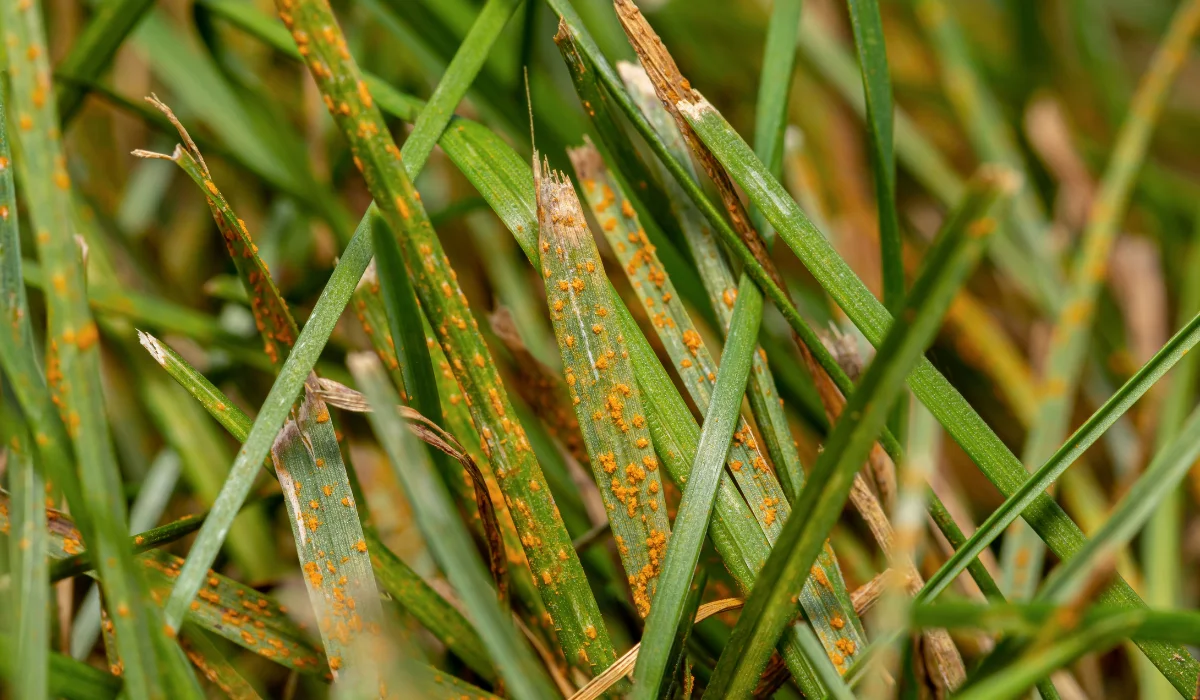
Diagnosing Rust in lawns involves looking for several telltale signs. Here’s a list of common indicators you should be aware of in grasses like zoysiagrass:
- Color and Texture: Grass blades take on a reddish-brown color and may feel dusty or gritty due to the presence of spores.
- Timing: Often becomes apparent in late spring, persists through the summer, and may diminish as temperatures drop.
- Affected Grass: Fine fescues are particularly susceptible to Rust but can also affect other species.
- Leaf Spots: Look for small yellowish spots that develop on the leaves that turn reddish-brown.
Snow Mold
Snow mold is a common turfgrass disease that becomes apparent as the snow cover melts in early spring, accompanied by wet weather.
Distinct patches of discolored grass can be identified, coming in gray or pink color. So, understanding the differences between gray and pink snow mold is crucial for proper lawn care.
Identifying Snow Mold After Winter
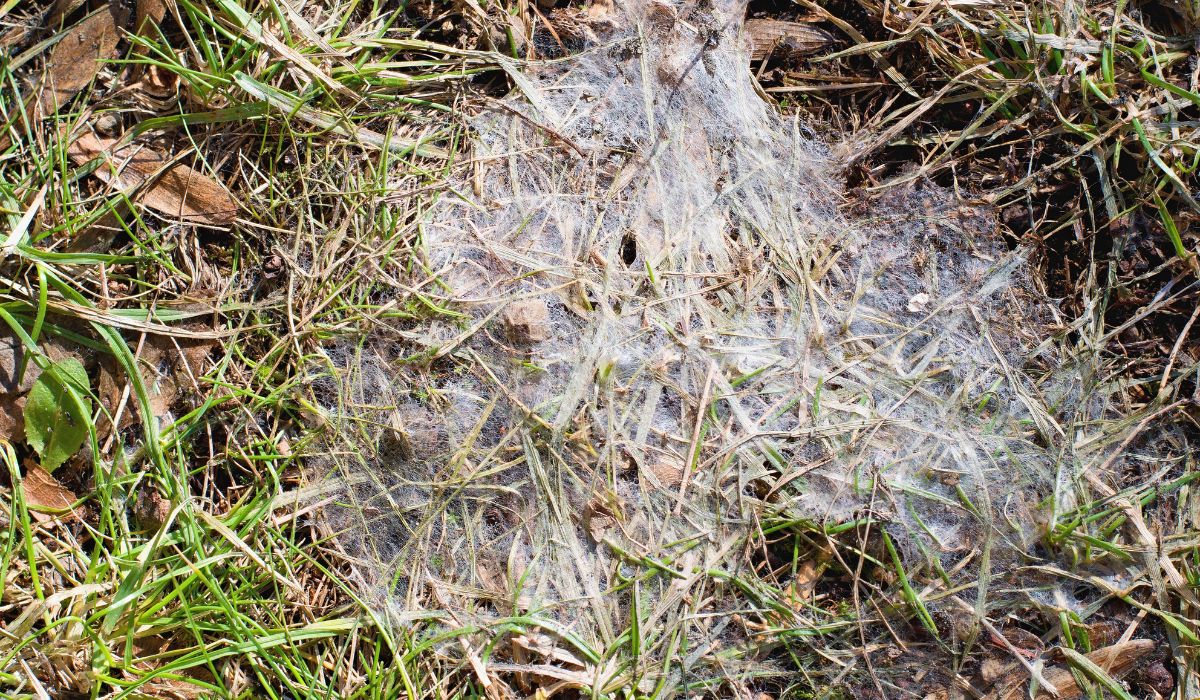
When the snow recedes, you may notice unusual circles of matted, discolored grass in their lawns. These are the initial telltale signs of this lawn disease.
Here’s a closer look at the two snow mold types to help you differentiate the two.
Gray Snow Mold | Pink Snow Mold |
Often appears as circular patches that can merge into large areas of infected grass. | Typically shows up as smaller patches with a distinctive pinkish color. |
Grass within the patch may appear fuzzy with a grayish web-like coating. | Infected areas are often marked by a web-like surface, and the grass may appear matted down. |
More likely to occur in regions where snow cover lasts for extended periods. | Can develop without snow cover but is prolific with snow, especially during thaws. |
Generally affects cool-season grasses like fescues and ryegrass. | Attacks many types of grass but is especially harmful to Kentucky bluegrass and perennial ryegrass. |
Powdery Mildew
Powdery Mildew is a common fungal disease that can hinder the aesthetics and health of lawns. It thrives particularly in environmental conditions with high humidity and poor air circulation.
Recognizing Powdery Mildew
Powdery Mildew is characterized by its distinct appearance on grass blades.
As lawn owners, you may notice this condition more frequently during cooler periods with damp nights and warm days. Other symptoms you should look for include:
- White or gray powdery substance on the grass
- Blotchy and distorted leaf surfaces
- Yellow patches of grass that can progress to larger areas of dieback if untreated
Summer Patch
Summer patch is a challenging disease that affects turfgrass, especially Kentucky bluegrass. It thrives in warm, humid conditions and can cause significant damage to lawns.
Identifying Signs of Summer Patch
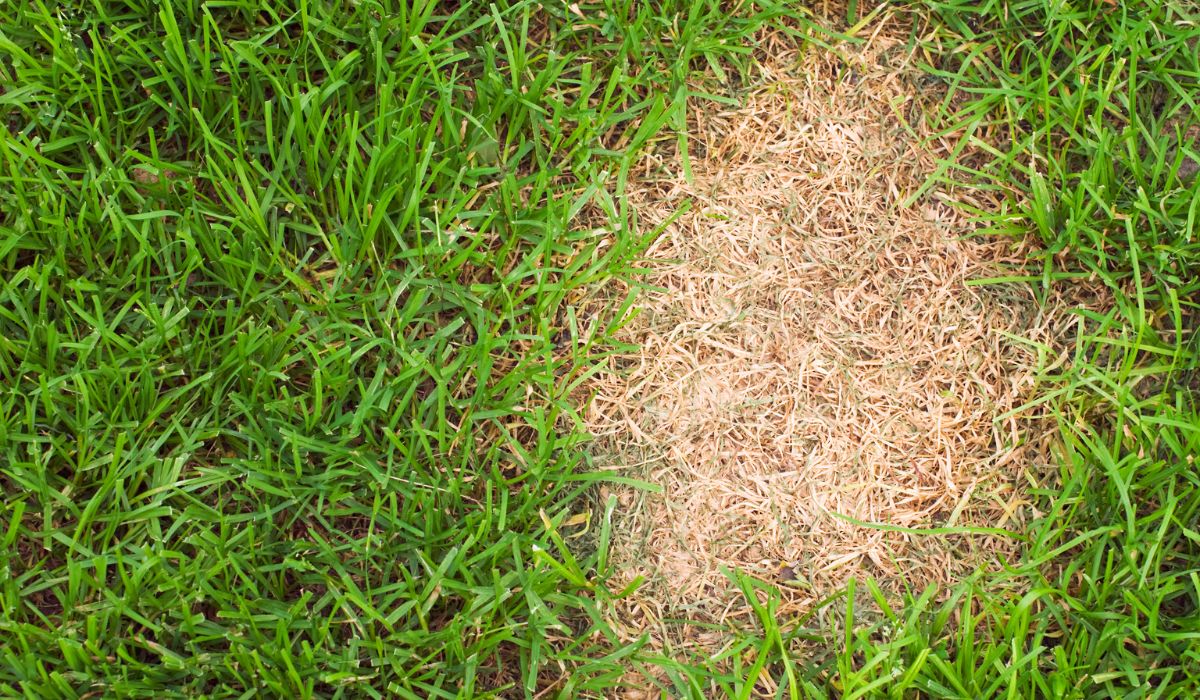
Summer patch manifests distinct symptoms on turfgrass, particularly Kentucky bluegrass and other Poae spp.
Lawns that suffer from compaction and poor drainage are most susceptible. To confirm the patterns as the summer patch, here’s a closer look at its progression to the affected areas:
Progression Stage | Description | Pattern |
Early | Grass appears wilted or water-soaked | Small circles |
Middle | Grass turns yellowish-brown | Expanding rings |
Later | Grass may die, leaving thin areas | Donut-shaped |
Pythium Blight
Pythium Blight is a rapid and destructive fungal disease that can devastate turfgrass, especially under wet and humid conditions. Hence, fast identification and treatment are essential to managing this disease.
Early Identification of Pythium Blight
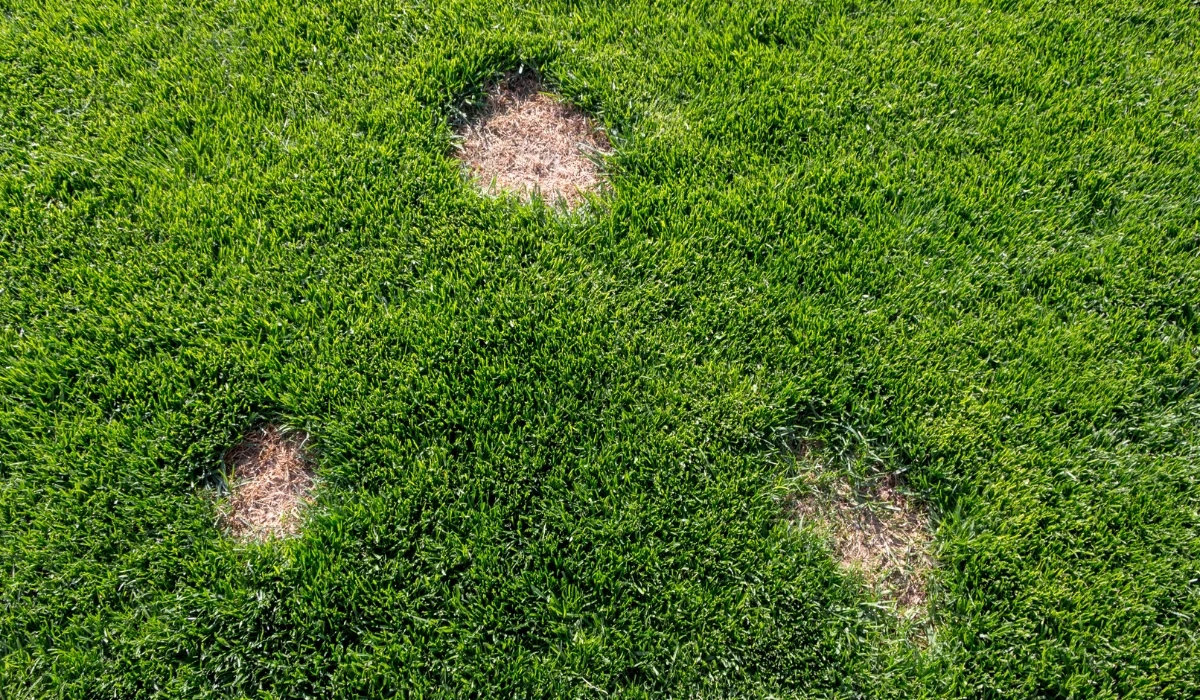
Pythium Blight thrives in environments with high moisture levels and warm temperatures, typically during the hotter months. Early signs in turfs like bermudagrass include:
- Small, circular spots on the grass that appear dark and water-soaked.
- White, cottony mycelium may be observed on affected turf when humidity is high, typically in the morning.
- Patches rapidly enlarge under favorable conditions, coalescing into large areas of blighted turf.
- Grass blades may be collapsed, slimy, and emit a rotten smell.
Slime Mold
Slime mold on lawns is more of a curiosity than a threat. Due to its unique appearance, it usually catches the eye of many mowing homeowners but does not typically harm the grass itself.
What Does Slime Mold Look Like?
Slime mold appears on lawns as irregular patches that can alarm you with their sudden presence.
Usually, it spreads when a lawn mower passes over these patches, potentially creating a wider display of this peculiar organism.
If you're trying to spot slime mold in your lawn, here's a closer look at its distinctive characteristics to guide your search:
Characteristics | Description |
Color | Ranges from yellow to dark brown. |
Texture | Starts slimy, becomes powdery over time |
Shape | Irregular patches |
Effect on Lawn | Non-damaging to grass, mainly cosmetic |
Gray Leaf Spot
Gray leaf spot is a lawn disease that causes unsightly patches by targeting specific types of grass. The pathogen responsible thrives in warm, humid conditions, often leading to significant damage in the infected areas if not addressed promptly.
Symptoms of Gray Leaf Spot
The telltale signs of gray leaf spot infestations in lawns are relatively distinct. Here are some symptoms to look out for:
- Oval lesions on the grass blades: These spots are initially small and water-soaked but soon turn grayish-brown with a dark brown border.
- Bleached grass appearance: As the lesions mature, the center becomes light tan, giving the blade a bleached look.
- Thinning turf: Severe infections can lead to thinned patches of turf as infected blades die off.
- Fuzzy spores: Lesions may produce fuzzy, dark gray spores in high humidity.
Either cool- or warm-season grasses are most susceptible to gray leaf spots, including:
- St. Augustine grass
- Perennial ryegrass
- Tall fescue
Is It Time to Call the Lawn Experts?
As homeowners, you might notice brown patches, wilting grass, or areas where the turf just won't grow back, no matter how lovingly you aerate, mow, and water your green space.
So, in what terms or situations should you contact the lawn care experts (like us at Native Pest Management)?
If the same issue keeps popping up season after season.
When the cause of lawn woes is as clear as mud.
If maintaining a healthy lawn feels like a second job.
When your commercial-grade fungicides don’t cut it.
Remember, there's no shame in enlisting a bit of help. The neighborhood lawn gurus like us have a knack for getting to the root of the problem—quite literally!
